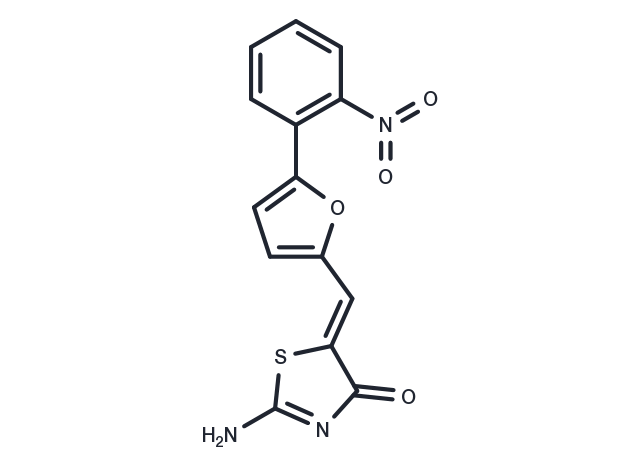Powder: -20°C for 3 years | In solvent: -80°C for 1 year


RTC13, as a premature termination codon (PTC) readthrough inducer, can act by restoring dystrophin expression and improving muscle function in the mdx mouse model for Duchenne muscular dystrophy.

| Description | RTC13, as a premature termination codon (PTC) readthrough inducer, can act by restoring dystrophin expression and improving muscle function in the mdx mouse model for Duchenne muscular dystrophy. |
| Synonyms | Read-through compound 13, RTC 13, RTC-13 |
| Molecular Weight | 315.3 |
| Formula | C14H9N3O4S |
| CAS No. | 1359825-94-7 |
Powder: -20°C for 3 years | In solvent: -80°C for 1 year
You can also refer to dose conversion for different animals. More
bottom
Please see Inhibitor Handling Instructions for more frequently ask questions. Topics include: how to prepare stock solutions, how to store products, and cautions on cell-based assays & animal experiments, etc.
RTC13 1359825-94-7 Read-through compound 13 RTC 13 RTC-13 inhibitor inhibit
